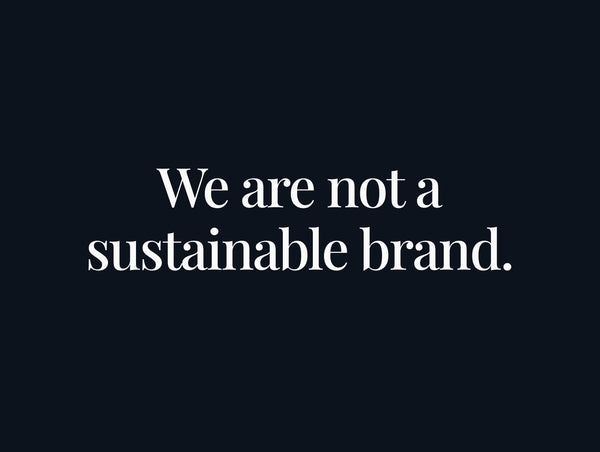
How To Fight Back Against Trump's Anti-Environment Agenda
Over the last three years, the Trump administration has rolled back much of the progress the Environmental Protection Agency (EPA) made in the last 50 years. And did it quietly but systematically.
The EPA was established in 1970, after Americans came to the streets to protest the environmental injustices on the first Earth Day that year -- a crude oil spill off the coast of California in 1969, increasing pollution in American cities (breathing in LA was akin to smoking two packs of cigarettes a day), the Cuyahoga River in Cleveland that caught on fire from oil lurking in industrial waste.



A reported 20 million Americans took to the streets; colleges and schools across the country participated by holding events, showing their exasperation with government and big industries. It was the beginnings of environmentalism and a public display that forced Nixon to set up the EPA. In his following State of the Union, he said:
“Restoring nature to its natural state is a cause beyond party and beyond factions. It has become a common cause of all the people of this country. It is a cause of particular concern to young Americans, because they more than we will reap the grim consequences of our failure to act on programs which are needed now if we are to prevent disaster later.”
Five decades later, America has made progress, aiming to clean up its waterways, preserve its open spaces, improve air quality, and look to a new economy, the post-coal economy.
But in the last four years, and even during this pandemic, the current administration has been breaking down these achievements brick by brick.
Bear in mind, Trump pulled America out of the Paris Agreement and tweeted this in retaliation:
"How is the Paris Environmental Accord working out for France? After 18 weeks of rioting by the Yellow Vest Protesters, I guess not so well! In the meantime, the United States has gone to the top of all lists on the Environment."
Not quite. The US is the “all-time biggest, baddest greenhouse gas emitter on the planet,” with the largest sum total of CO2 emissions. So yes, I suppose, it’s at the top of that list.
There are 100 measures and guidelines which span air pollution to wildlife conservation to the proper disposal of toxic chemicals, which are now on the chopping board. Some have already been successfully reversed; others are in the works.
Who runs the EPA? Andrew Wheeler -- ironically, a former coal lobbyist. He got the job after Scott Pruitt, an Oklahoma politician who prized wealth over serving citizens, ultimately resigned due to the heavy media scrutiny.
The partisanship at the EPA has grown so severe that some employees have left, and then created their own network, Environmental Protection Network.
So what are the most serious measures that the Trump administration has reversed entirely or weakened? And what can be done about them?
1. Reversing fuel economy and greenhouse gas standards for passenger cars and light trucks.
BEFORE: Given that so much of America’s pollution stems from transportation, the government set standards that would reduce greenhouse gas (GHG) emissions, improved air quality and increased fuel economy.
Transportation adds up to about 30 percent of America’s greenhouse gas emissions:
TOTAL U.S. GREENHOUSE GAS EMISSIONS
BY ECONOMIC SECTOR IN 2018

NOW: The rollback is expected to increase GHG emissions by 1.5bn metric tons through 2040. This can further derail climate change efforts, and result in 18,500 more premature deaths by 2050, experts say, because of poor air quality.
In March, as America was going into lockdown, the Trump administration still went ahead with this update -- or shall we say, reversal-- on reducing greenhouse gas emissions from vehicles.
The new rule legally allows cars to “emit nearly a billion tons more carbon dioxide over the lifetime of the vehicl[e] than [it] would have under the Obama standards and hundreds of millions of tons more than” what is going to be permitted in Europe and parts of Asia.
California has always been an outlier, pushing for more environment-forward legislation. The Trump administration took that away from the Golden State, stating that it cannot create stricter auto emissions standards than the federal government. California (along with 22 other states) filed suit to reverse this decision.
Plus, four car companies -- Ford, BMW, Honda, and even Volkswagen (yes, the same guys that were caught for cheating system on emissions!)-- agreed to follow California’s tighter goal of ensuring that cars have an average fuel of economy of 51 miles per gallon by 2026. Not all car companies were on board, not wanting to get stuck between state guidelines that could conflict with federal regulation. Trump was thrilled to have their support.
Trump tweeted: Thank you @GM, @FiatChrysler_NA, @Toyota, and @GloblAutomkrs for standing with us for Better, Cheaper, Safer Cars for Americans. California has treated the Auto Industry very poorly for many years, harming Workers and Consumers. We are fixing this problem!
TAKE ACTION:
Write to the House Committee on Energy and Commerce to keep the pressure on the EPA and the Trump administration. More than 100 House representatives are continuing to fight this change and keep America on the path to a fossil-free future.
2. Repealing The Clean Power Plan to save coal
BEFORE: This would have put very tight limits on what emissions are permissible from coal and gas-fired power plants across the country, creating a federal baseline. The aim was to cut pollution from power plants (which made up 38% of the CO2 emissions in 2015, at the time the plan was drafted) by 32 percent by 2030. Smog and soot-related emissions were to be reduced by 20 percent.
The Trump Administration said this plan, which was drafted during the Obama presidency, violated federal law and de-incentivized the coal industry. When Scott Pruitt announced the proposed changes, he stated, “The war on coal is over.”
It gets better. He went to say:
“This president has tremendous courage,” Pruitt said. “He put America first and said to the rest of the world: we are going to say no and exit the Paris accord. That was the right thing to do.”
Yet what they failed to recognize is that natural gas and renewable energy is getting cheaper and many electricity companies are reverting over to this alternative source purely on economics.
NOW:
In 2019, the Trump Administration introduced the Affordable Clean Energy (ACE) rule. Why? Because the law requires the EPA to fight carbon emissions. Thus, simply repealing the Clean Power Plan was not an option legally. They had to come up with an alternative.
However, this new rule is weak: it would only decrease power sector emissions by 0.7 t o 1.5 percent by 2030. It also gives states more control of determining how they want to cut emissions from power plants.
TAKE ACTION:
Yes, you can write to the EPA and your legislative bodies, calling for tighter restrictions on the coal industry. But the reality is that market forces are likely to make the coal industry a thing of the past.
Convert your monthly electricity bill to Arcadia Power. 50 percent of your electricity bill will be sourced from wind power. If you’re willing to pay a little more, 100 percent of your electricity bill can support renewable energy. The more demand for RECs, associated with wind power, the less incentive for electricity companies to continue down the road of coal.
3. The Arctic National Wildlife Refuge is now open to drilling and oil exploration -- after over 50 years of keeping it shut.
BEFORE:
For decades, environmentalists have been fighting to keep this area in northeastern Alaska protected from oil companies and politicians who are eager to please. Approximately the size of South Carolina, the Arctic National Wildlife Refuge is the largest wildlife sanctuary in the US. It’s been kept free of development: few, if any, roads; no structures; no real signs of modern civilization. Rather, it’s home to countless wildlife who roam this 1.9 million acres of land freely.
NOW:
In 2017, a Republican Congress was keen to pass the Tax Cuts and Jobs Act that has become synonymous with the Trump Administration. Lisa Murkowsi, a Republican senator from Alaska, turned out to be the critical vote to get this bill passed. To please her, reportedly, an area the size of Delaware in the Arctic National Wildlife Refuge was put on the table for oil exploration. This, environmentalists and local Native American tribes fear is just opening the door to digging into a pristine, uninhabited landscape.
Trump turned ANWR into a joke at a Republic Committee meeting. First, he stated he didn’t know what ANWR was or its significance. Then when he hears that countless presidents and their administrations have tried to open it up to Big Oil, he’s enthusiastic about this bill.
ACT NOW:
Support the Gwich’in movement to block oil exploration in the ANWR. This indigenous group has been safeguarding the region for decades. Now more than ever they need support to keep oil companies at bay. Go to their site here with specific call-outs to legislators and to donate.
AND OF COURSE, VOTE ON NOVEMBER 3RD!

















